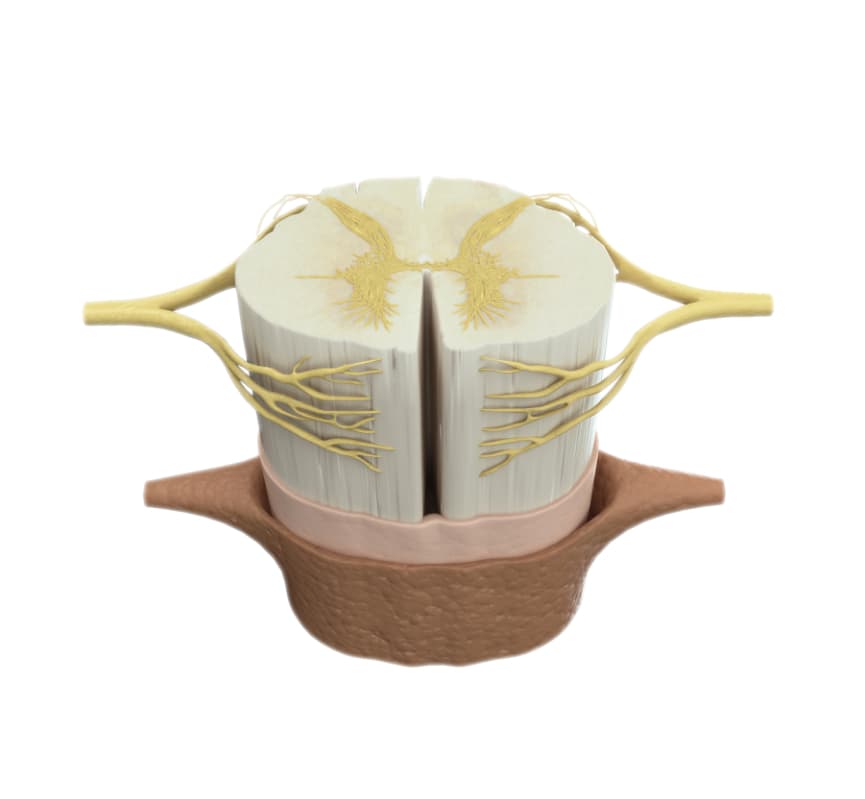Novel spinal stimulation breakthrough offers new hope for paralysis patients
Novel stimulation protocol helps reduce muscle spasticity and improve walking rehabilitation in patients with incomplete spinal cord injuries, offering hope for enhanced recovery outcomes.
Scientists have developed a new approach using high-frequency electrical stimulation of the spinal cord that could help people with spinal cord injuries regain better control of their movements by reducing problematic muscle spasticity. The research, published 8 January 2025 in Science Translational Medicine, demonstrates how this technique, when combined with conventional rehabilitation methods, enabled two patients with incomplete spinal cord injuries to achieve significant improvements in their walking abilities.
The study, led by researchers at the Università Vita-Salute San Raffaele and Scuola Superiore Sant’Anna, utilised a commercially available 32-channel electrode array implanted in the epidural space of the spine. “In all HF-EES protocols, the frequency was set to 1.2 kHz and the pulse width was set to 20 μs, which were the maximum frequency and the minimum pulse width achievable with the system,” the researchers explain.
The team developed personalised protocols for each patient based on their specific needs. “We designed tailored HF-EES protocols for each participant with the aim of suppressing spastic muscle contractions by kilohertz block of the proprioceptive afferents,” the authors note in their methodology.
Clinical outcomes and improvements
The results showed remarkable progress in both participants. As the researchers note: “By incorporating HF-EES alongside LF-EES in personalized stimulation programs employed during the intensive neurorehabilitation training, the patients demonstrated notable clinical improvements in muscle function and motor performance over several months up to the follow-up evaluation.”
The first participant achieved particularly notable outcomes. “Patient P1 achieved the ability to walk for 12 min at a speed of 0.30 m/s, and the patient was also able to maintain a speed of 0.6 m/s for more than a minute,” the authors report.
Mechanism of action and therapeutic potential
The researchers discovered that the high-frequency stimulation worked through a specific mechanism: “The reduction in afferent input might also induce short-term modifications in spinal interneuron circuits, contributing to the facilitation effect observed during functional tasks in both patients.”
This finding has significant implications for treatment approaches. As the authors explain: “By providing short-term relief from spasticity, HF-EES offers a valuable tool to support motor function during daily activities and enhance neurorehabilitation.”
While acknowledging the study’s limitations, including its small sample size, the researchers remain optimistic about the potential applications: “Overall, HF-EES seems to offer a flexible tool for addressing spasticity without long-lasting side effects. Future research should compare HF-EES with existing surgical and pharmacological treatments for spasticity, focusing on efficacy and side-effect trade-offs.”
The study represents a significant advancement in spinal cord injury treatment, particularly as it utilises existing medical devices. “Leveraging already approved clinical devices offers the intriguing potential to reduce the regulatory process and expedite adoption of EES-assisted rehabilitation for SCI treatment,” the authors conclude.
Reference:
Romeni, S., Losanno, E., Emedoli, D., et. al. (8 January 2025). High-frequency epidural electrical stimulation reduces spasticity and facilitates walking recovery in patients with spinal cord injury. Science Translational Medicine. doi: https://doi.org/10.1126/scitranslmed.adp9607


